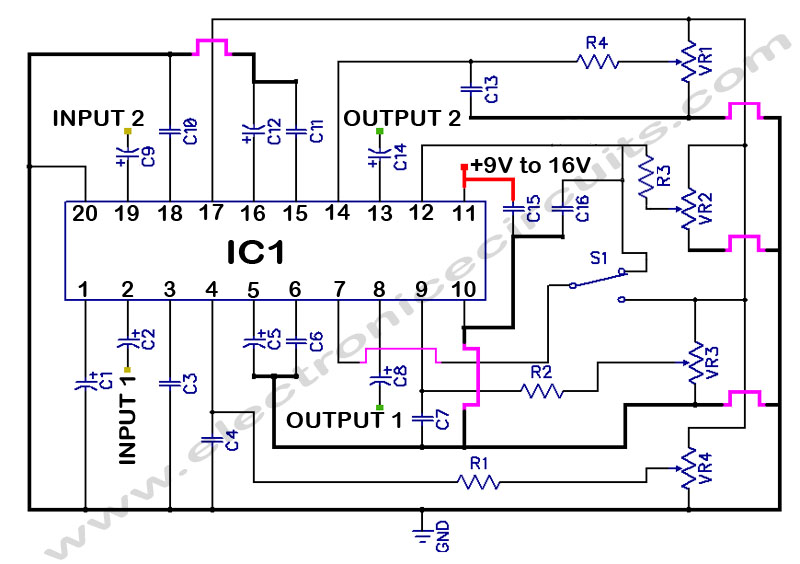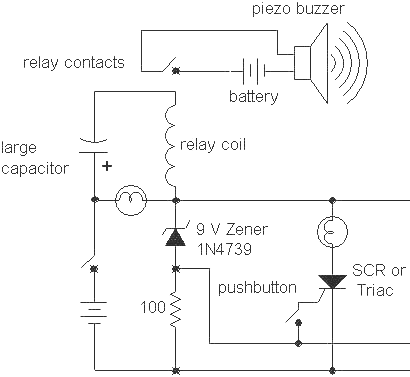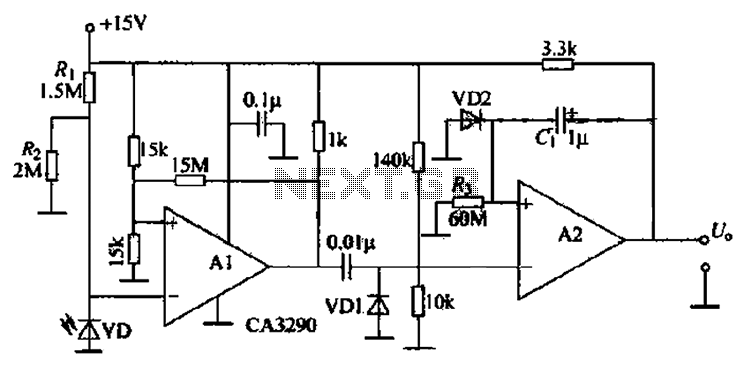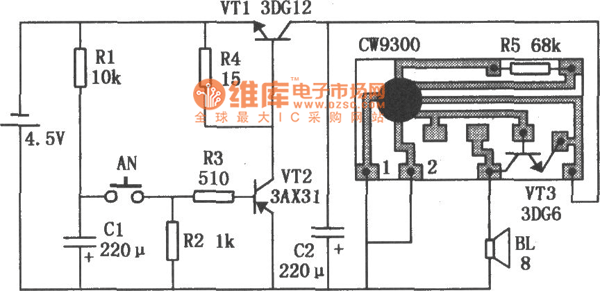
infrared Help Troubleshooting This Circuit

This is a follow-up to an earlier post regarding a specific circuit schematic. The circuit is designed to operate at a supply voltage of 5V, and testing has confirmed that the original device functions correctly at this voltage. A printed circuit board (PCB) version of the circuit was created, populated, and powered on successfully. Initial tests showed that both the original and the PCB version operated well when powered from a 3.3V supply. However, upon increasing the voltage toward 5V, an issue was observed: the output of the PCB version went low at approximately 3.8V and remained low until reaching 5V. When the voltage was reduced, the output returned to high at around 3.6V, indicating functionality at voltages below approximately 3.6V. Further investigation revealed that the pin 11 input of U1E toggled as the voltage crossed the 3.6V threshold. Probing the output of U1D (pin 8) presented difficulties, which led to the attachment of a wire to facilitate measurement. This modification unexpectedly improved circuit behavior, with the output performing as intended. However, the hanging wire is not a viable long-term solution. The circuit exhibits a 32.768 kHz oscillation at U1D (pin 8) when no infrared (IR) signal is present, starting at around 3.1V and becoming significant between 3.6V and 3.8V, causing the output of U1E (pin 10) to go low.
The circuit configuration involves a series of inverter stages leading to the U1E component, which is critical for determining the output states based on the input signals. The observed behavior at the input of U1E suggests that the circuit's sensitivity to IR signals may be affected by the voltage supply levels, particularly around the 3.6V threshold. The oscillation noted at pin 8 of U1D could indicate a potential instability in the circuit design, possibly due to insufficient biasing or grounding issues.
To address the problem, it may be beneficial to implement a biasing network at the input of U1E. This could involve the addition of resistive components to establish a stable reference point, enhancing the circuit's ability to discern between high and low states in the presence of minimal IR signals. Additionally, ensuring proper decoupling and filtering around U1D might help mitigate the unintended oscillations observed. It is also recommended to review the layout for any potential parasitic capacitance or inductance that could be influencing the circuit's performance, especially at higher supply voltages.
Further testing and refinement of the PCB may be necessary to achieve consistent performance across the intended operating voltage range. Implementing these modifications should improve the reliability of the circuit while eliminating the reliance on temporary solutions such as the wire attached to pin 8.This is a follow up to an earlier post I made here. Below is the relevant portion of the schematic for this issue (stuff to the left of Y1 is in original post if necessary). I have finally gotten this circuit working somewhat reliably with one exception. The original device (read layout) is intended to work at 5V. I have the original device and c an verify that it does work properly at 5V. I just got my PCB back which has a copy of the circuit. I populated the board and fired it up and it seemed to work like a champ. I had both (original and copy) wired up on the bench and was looking at the output of each channel on the scope. Things looked great. Then, I happened to notice that I was powering up the two from 3. 3V as I`ve been switching between projects and did not change the power supply voltage when I last switched.
I begin to adjust the voltage up toward 5. 0V and I notice that right about 3. 8V the output of the copy goes low and stays low up to 5. 0V. I lower the voltage and it goes high (but toggles low when IR present) at about 3. 6V. So, the circuit works at a supply voltage < ~ 3. 6 V. With the voltage set at 5. 0V I start to probe around comparing all signals to the original. Following the individual inverter stages things look identical right up to the input of U1E (pin 11). As I vary the voltage across that threshold of roughly 3. 6V that pin toggles. So, next I want to take a look at the output of U1D (pin 8). I found it quite difficult to probe this and watch the scope at the same time as the probe would slip off the contact point.
So, I decided to take a piece of 3" wire wrap and tack it onto the pin so that I could grab a hold of it with the probe. I did that, fired it up and the circuit behaves quite nicely! It operates as expected. At this point I don`t even have the probe on the wire I tacked onto the pin. So, the addition of this wire hanging from the pin has solved my issue. The blue trace is the output of the entire circuit (Q3 Collector). The magenta trace is the input of U1E (or cathode of D4). You`ll notice I gave each two pulses from the transmitter. In the snapshot without the wire tacked you`ll notice that the steady state is quite noisy. Of course, hanging a wire off this pin is not a real solution and I don`t understand why it works so that is the reason for my question.
What should I do here Just thinking out loud that it would be nice if I could fix a `bias point` on the input of U1E so that minimal IR receive is necessary for a high. There seems to be a 32. 768 kHz oscillation at U1D (pin 8) with no IR signal present. This oscillation kicks in when the supply voltage is roughly 3. 1V. By 3. 6V to 3. 8V it is prevalent enough to cause the output of U1E (pin 10) to drive low. 🔗 External reference
The circuit configuration involves a series of inverter stages leading to the U1E component, which is critical for determining the output states based on the input signals. The observed behavior at the input of U1E suggests that the circuit's sensitivity to IR signals may be affected by the voltage supply levels, particularly around the 3.6V threshold. The oscillation noted at pin 8 of U1D could indicate a potential instability in the circuit design, possibly due to insufficient biasing or grounding issues.
To address the problem, it may be beneficial to implement a biasing network at the input of U1E. This could involve the addition of resistive components to establish a stable reference point, enhancing the circuit's ability to discern between high and low states in the presence of minimal IR signals. Additionally, ensuring proper decoupling and filtering around U1D might help mitigate the unintended oscillations observed. It is also recommended to review the layout for any potential parasitic capacitance or inductance that could be influencing the circuit's performance, especially at higher supply voltages.
Further testing and refinement of the PCB may be necessary to achieve consistent performance across the intended operating voltage range. Implementing these modifications should improve the reliability of the circuit while eliminating the reliance on temporary solutions such as the wire attached to pin 8.This is a follow up to an earlier post I made here. Below is the relevant portion of the schematic for this issue (stuff to the left of Y1 is in original post if necessary). I have finally gotten this circuit working somewhat reliably with one exception. The original device (read layout) is intended to work at 5V. I have the original device and c an verify that it does work properly at 5V. I just got my PCB back which has a copy of the circuit. I populated the board and fired it up and it seemed to work like a champ. I had both (original and copy) wired up on the bench and was looking at the output of each channel on the scope. Things looked great. Then, I happened to notice that I was powering up the two from 3. 3V as I`ve been switching between projects and did not change the power supply voltage when I last switched.
I begin to adjust the voltage up toward 5. 0V and I notice that right about 3. 8V the output of the copy goes low and stays low up to 5. 0V. I lower the voltage and it goes high (but toggles low when IR present) at about 3. 6V. So, the circuit works at a supply voltage < ~ 3. 6 V. With the voltage set at 5. 0V I start to probe around comparing all signals to the original. Following the individual inverter stages things look identical right up to the input of U1E (pin 11). As I vary the voltage across that threshold of roughly 3. 6V that pin toggles. So, next I want to take a look at the output of U1D (pin 8). I found it quite difficult to probe this and watch the scope at the same time as the probe would slip off the contact point.
So, I decided to take a piece of 3" wire wrap and tack it onto the pin so that I could grab a hold of it with the probe. I did that, fired it up and the circuit behaves quite nicely! It operates as expected. At this point I don`t even have the probe on the wire I tacked onto the pin. So, the addition of this wire hanging from the pin has solved my issue. The blue trace is the output of the entire circuit (Q3 Collector). The magenta trace is the input of U1E (or cathode of D4). You`ll notice I gave each two pulses from the transmitter. In the snapshot without the wire tacked you`ll notice that the steady state is quite noisy. Of course, hanging a wire off this pin is not a real solution and I don`t understand why it works so that is the reason for my question.
What should I do here Just thinking out loud that it would be nice if I could fix a `bias point` on the input of U1E so that minimal IR receive is necessary for a high. There seems to be a 32. 768 kHz oscillation at U1D (pin 8) with no IR signal present. This oscillation kicks in when the supply voltage is roughly 3. 1V. By 3. 6V to 3. 8V it is prevalent enough to cause the output of U1E (pin 10) to drive low. 🔗 External reference
Warning: include(partials/cookie-banner.php): Failed to open stream: Permission denied in /var/www/html/nextgr/view-circuit.php on line 713
Warning: include(): Failed opening 'partials/cookie-banner.php' for inclusion (include_path='.:/usr/share/php') in /var/www/html/nextgr/view-circuit.php on line 713





